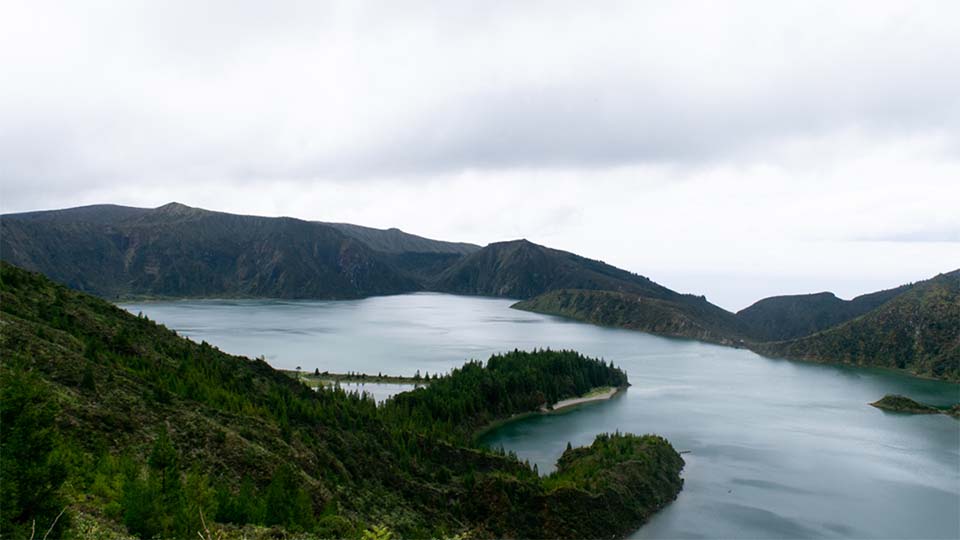After three (ish) days in Porto, we headed back to the airport to catch a flight to Ponta Delgada, the capital of the Azores. The city is located on São Miguel, the archipelago’s largest island, which we’d call home for the next three (ish) days of our trip. (The Azores, which were settled by the Portuguese in the 1400s and became essential to global trade in the centuries after, are an autonomous region within Portugal.) We considered other islands, either as the only stop during our trip or as part of a multi-island itinerary. But with two destinations in mainland Portugal, we decided to stick with the island that was easiest to get to and around. This trip, it made the most sense to put the Azores in the middle of our itinerary, even though it meant a little bit of back and forth over the Atlantic. I’d love to go back to the Azores, and Azores Airlines flies direct from Toronto to Ponta Delgada in about 6 hours. You can island hop via plane or ferry, depending on where you’re trying to go.
Day 1
Our first day on São Miguel was also our last day in Porto, and we arrived on the island mid-afternoon. Our flight was a little late, so we rushed to the rental car lot at the airport to pick up our rental car. When it wasn’t there, we decided we’d figure it out from the hotel and grabbed a taxi.
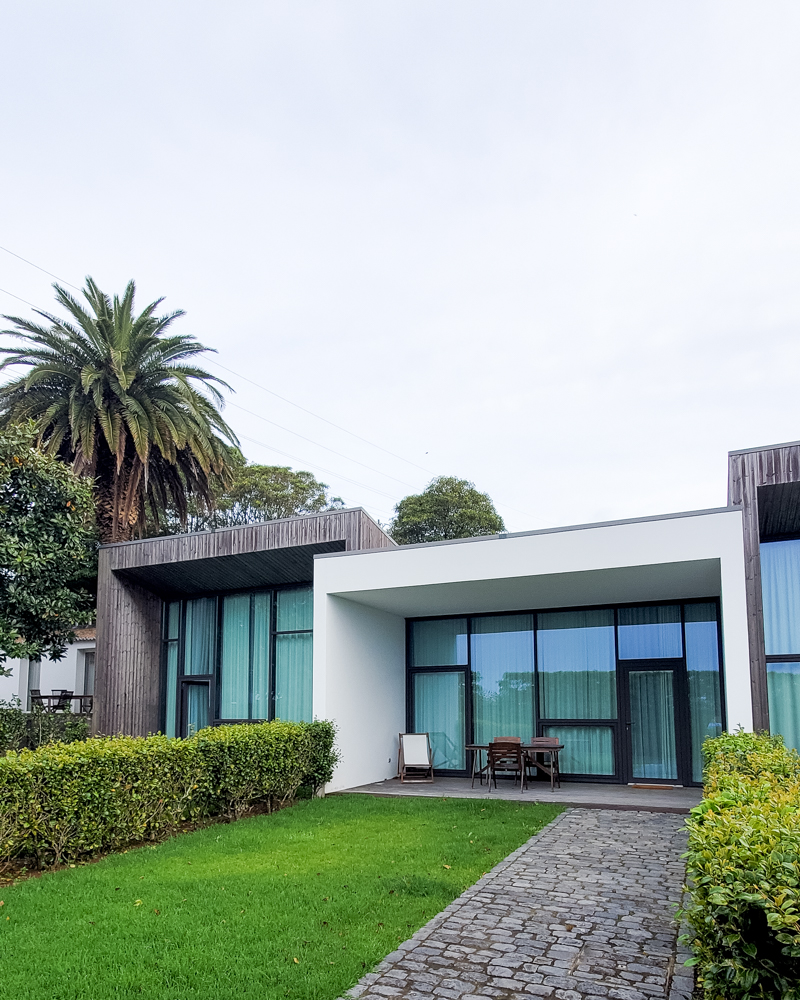
We checked in to the beautiful Quinta de Santa Clara and just as we were getting settled, the rental car company called us—from the airport. Apparently, the rental car company times their arrival to the airport with your flight, even if it’s delayed. We just assumed that because our flight was late, we were on our own. After a little bit of back and forth made more difficult by our international phone plan, the rental car company employee came to our hotel to pick us up and take us to our car, which was now waiting for us at the company’s downtown location. We made the situation way more complicated than it needed to be, but we can highly recommend Azores Easy Rent.
Rental car secured (a cute little VW SUV with a manual transmission Cody was very excited to drive around the island), we needed dinner. It was Sunday in a small city and we were a little overwhelmed by our day of travel, so we headed to McDonald’s instead of hunting for a local option that was both good and open. Other than a quick Google of how to put the rental car in reverse in the parking lot, McDonald’s was just as comforting as we needed it to be.

After dinner, we got groceries at Continente Modelo, which had everything we needed for breakfast in our kitchenette and packable snacks for the next couple of days. We also picked up a six-pack of Sagres to try after a few days of Super Bock (the beer of choice in Northern Portugal) in Porto. Back at the hotel, we enjoyed our beers on our little patio and finished planning our two full days on the island.
Day 2
The first thing you do every morning as a tourist in the Azores is check the cameras. The islands’ weather is temperamental, so Visit Azores operates cameras at all of the hotspots on the islands. If all you can see is grey, it’s not a faulty camera, it’s just that cloudy. If a destination is clear, you go there.
We woke up on our first morning in Ponta Delgada, checked the cameras, saw clouds everywhere, and settled into a slow morning. I had the yogurt and granola we had picked up at the grocery store the night before, sweetened with strawberries from the hotel’s garden. Then, we headed into the core of the capital city in search of coffee, which we found at Intz48 Coffee Roasters Azores. The coffee was good, but we avoided any deep discussion with the shop owner/operator, as recommended by Reddit.
This was our first experience driving in a centuries-old city, and it was stressful once you left the main road. The streets are tiny. But so is the city, so after this harrowing experience, we mostly parked along the main road and walked to where we needed to go.
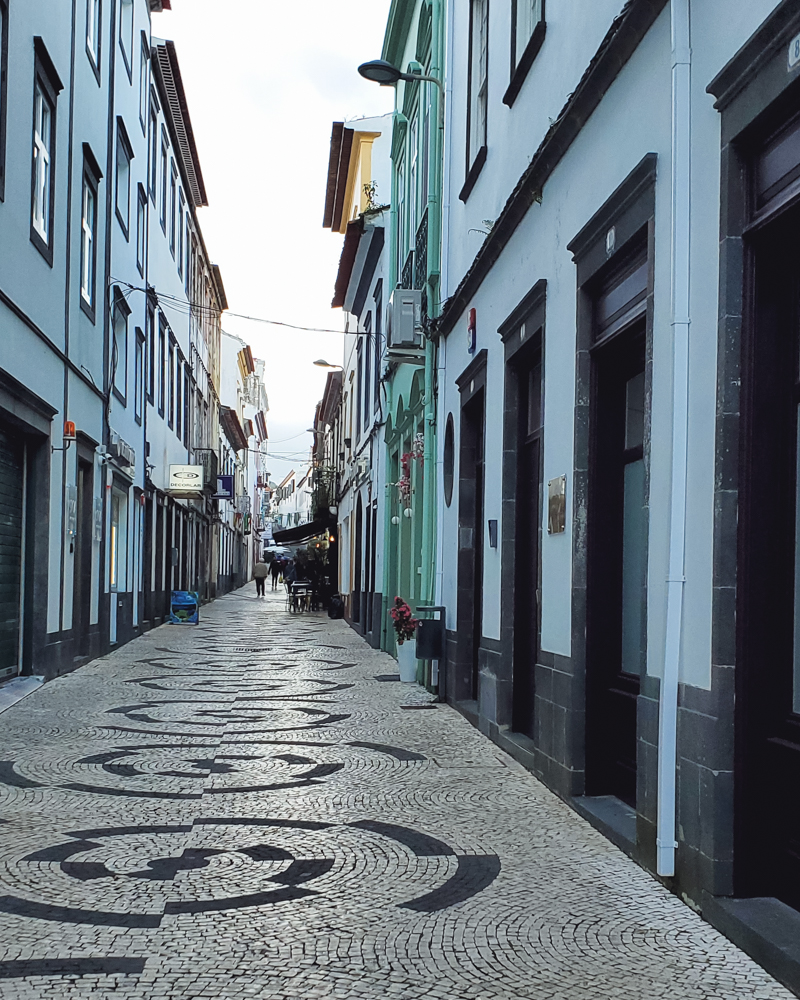
The streets of Ponta Delgada (and many other Portuguese cities) are stunning. Calçada Portuguesa, which uses black basalt and white limestone to create mosaics, is much more prevalent here than in modernized cities like Porto because it can be hard to walk on, especially in wet weather, as well as difficult to maintain. In the Azores, basalt is readily available, while limestone has to be imported, so the designs have more black than in mainland cities.
Despite the clouds at higher elevations, the morning was lovely on the coast. We drove up to Miradouro da Nossa Senhora da Paz, which served as the most beautiful introduction to the island. This old church is set above the small town of Vila Franca do Campo and surrounded by grazing cows. Unfortunately, this stop was also our first experience with travel influencers in the wild. Someone’s drone flew low over the farmer tending to his cows behind the church, while another person shot multiple takes of their partner as they walked down the stairs.
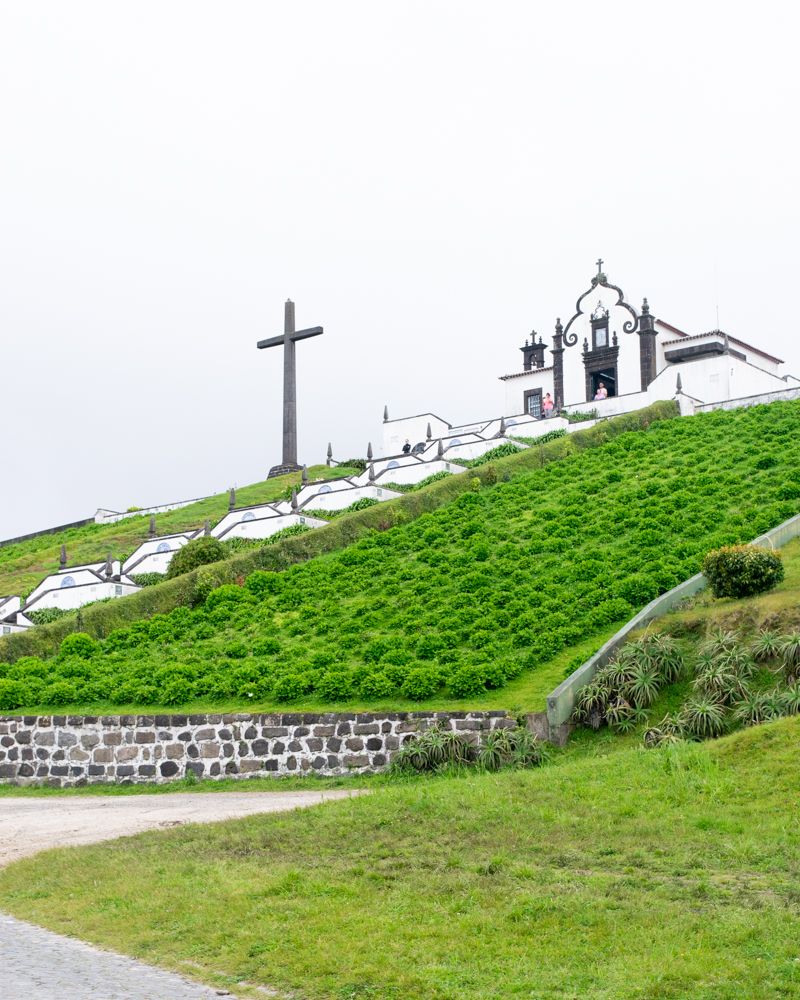

From the overlook, we continued heading east to the small town of Faial da Terra. The winding road was fairly steep heading down into the town and at one point I was seriously concerned we were going to slide right down into the ocean. But we made it to street parking near the trailhead for the Sanguinho trail. The 2.8-mile loop takes you past Cascata do Salto do Prego (where several more prepared people were having picnic lunches) and through a previously abandoned village currently undergoing restoration for tourism purposes.
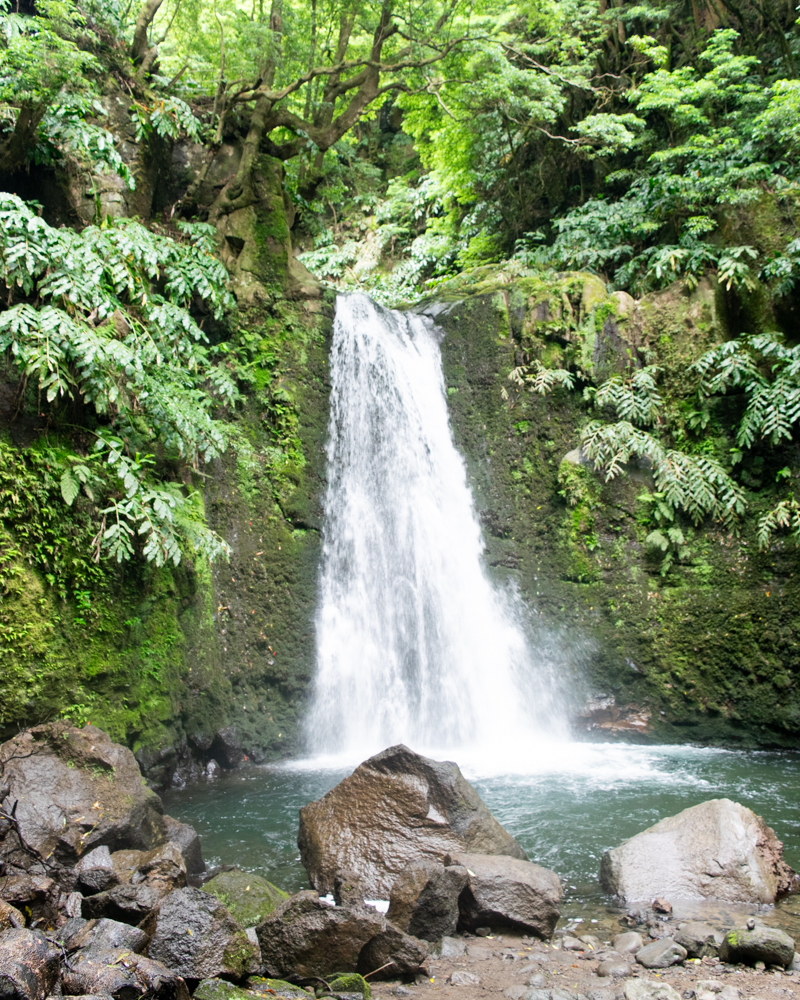
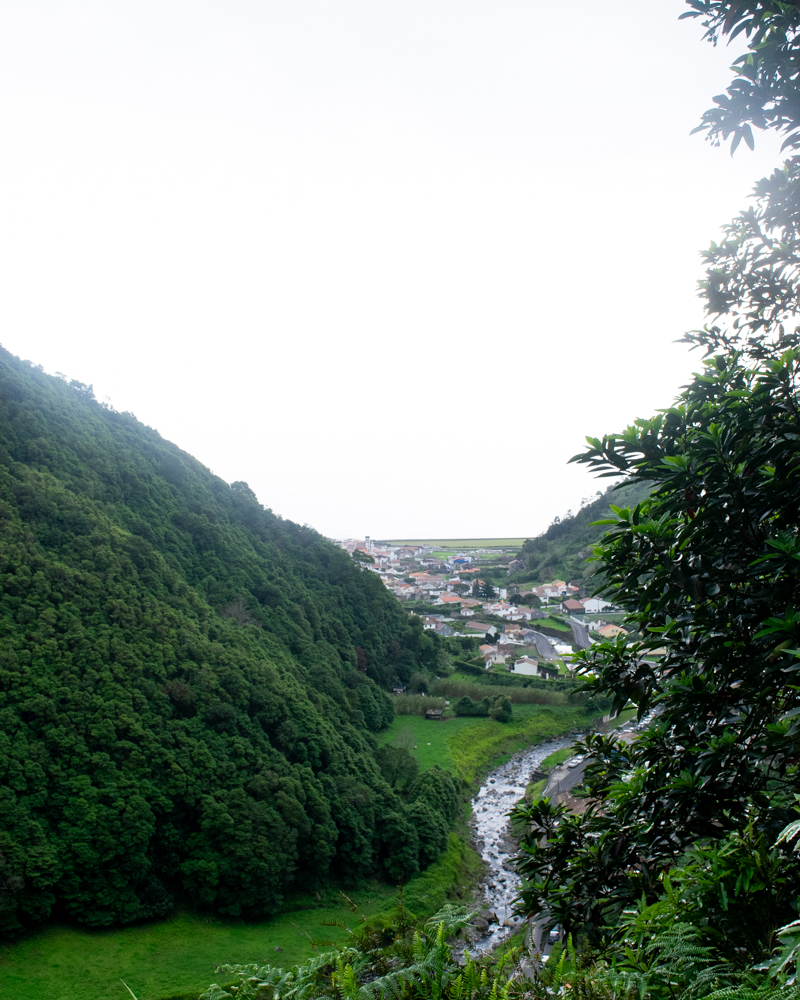
After the hike, we drove back the way we came and headed into Furnas for the afternoon. Our first order of business was finding lunch. We settled on ESPINHA.COME, mostly because it was one of the few restaurants open for lunch, but we have absolutely no complaints about the food or the service. We finished with just enough time to drive to and park for our ticketed time at Poça da Dona Beija, our hot springs of choice.
Furnas’s main attraction is its hot springs, and there are several good options, including Poça da Dona Beija and Parque Terra Nostra. We chose the first because we knew we only had a few hours, and it seemed more organized; reviews spoke more highly of the entry process and changing facilities. However, Parque Terra Nostra is undergoing extensive renovations, so it’s likely these will be nonissues soon. While the water at Poça da Dona Beija is heated by the earth, the pools are a very carefully built and maintained attraction. It’s absolutely beautiful and I’d go back in a heartbeat, but if you’re looking for a natural hot spring (like the kind you come across mid-hike), this is not it.
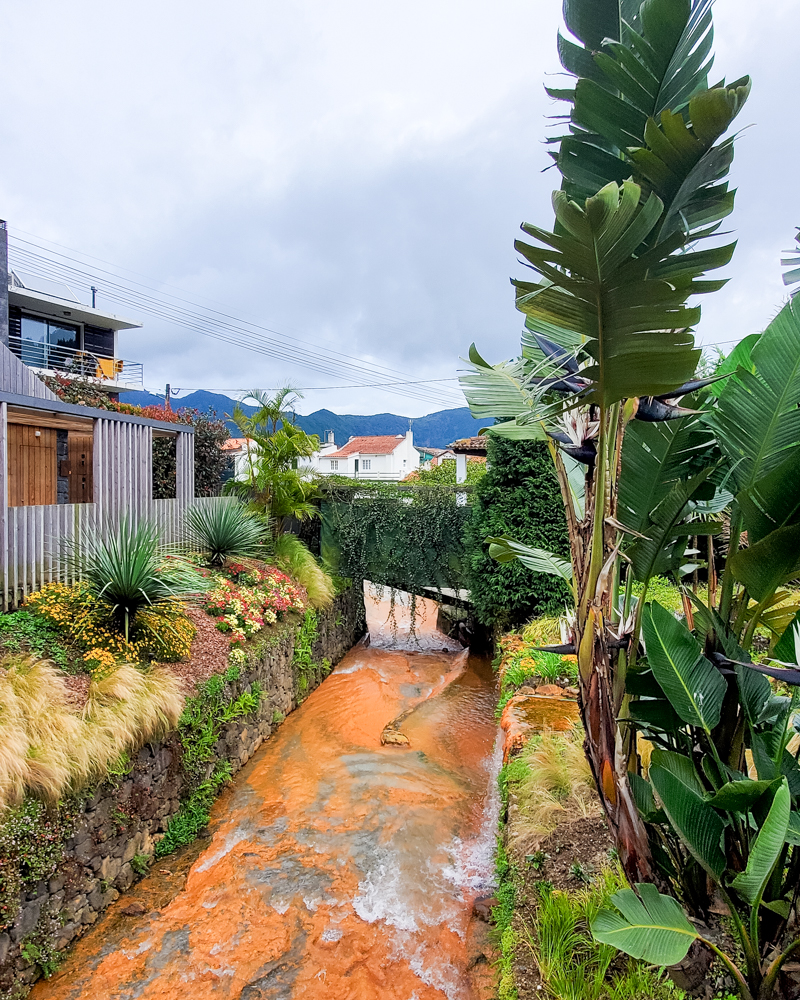
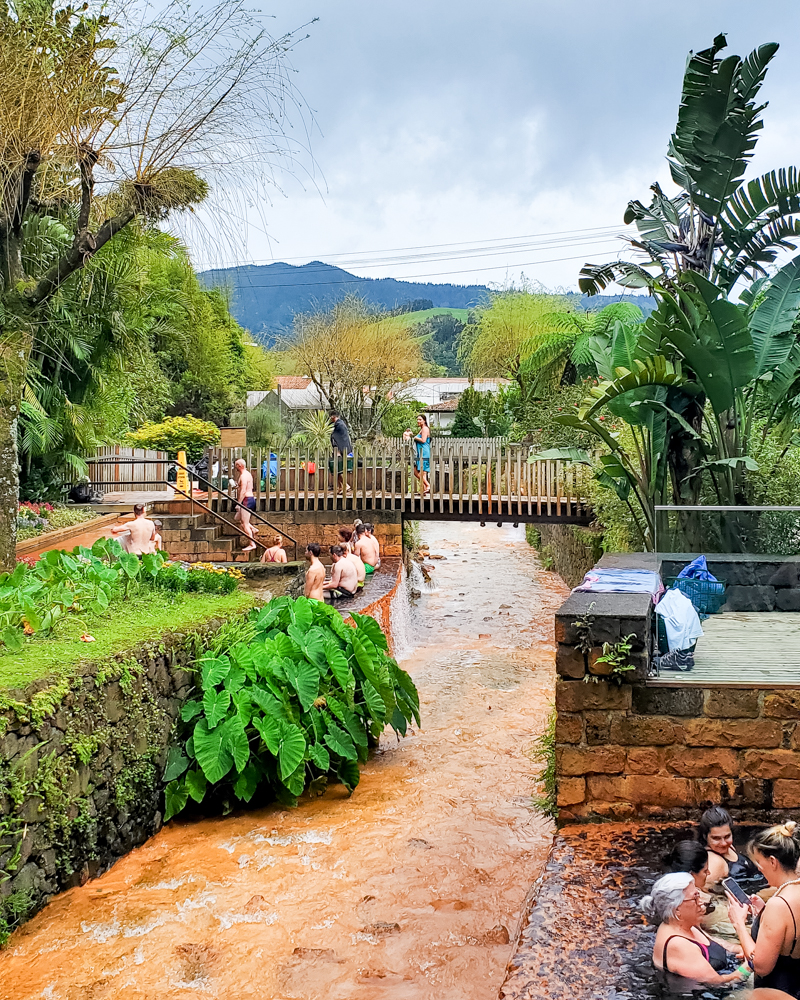
We left after a little over an hour, only slightly earlier than our allotted 1.5 hours. We drove to Chá Gorreana, Europe’s oldest operational tea plantation, which maintains a publicly accessible hiking trail through its terraced fields. After tea for me and espresso for Cody, we hiked the very pretty, very hilly 2.1-mile loop.
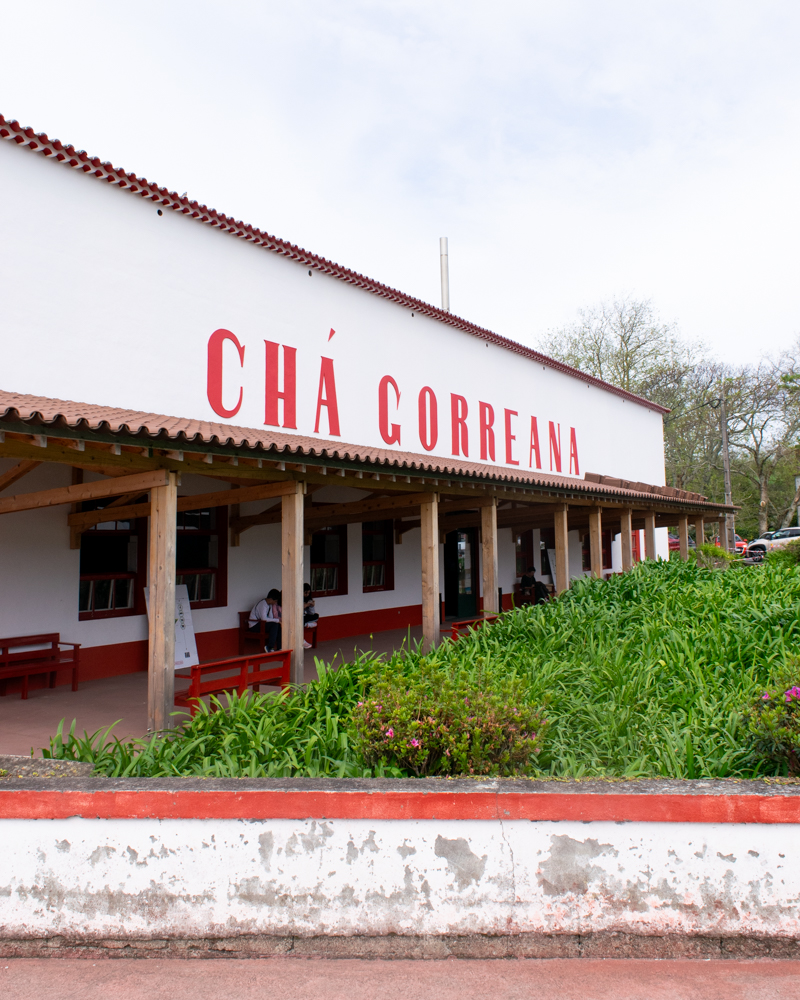
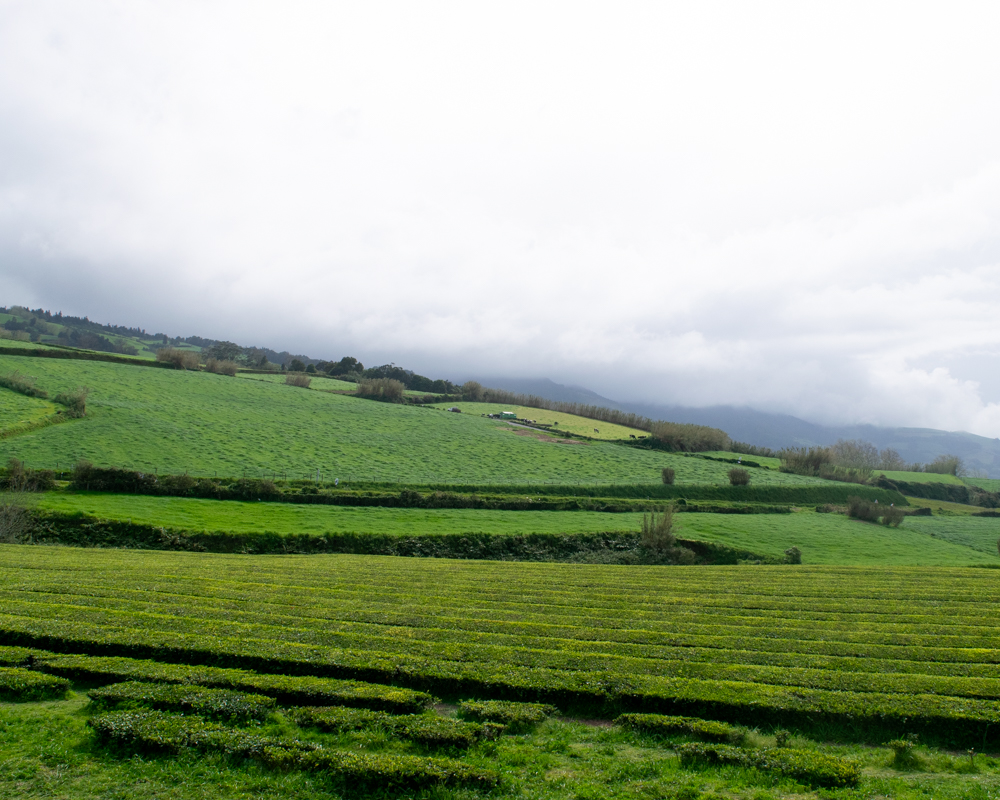
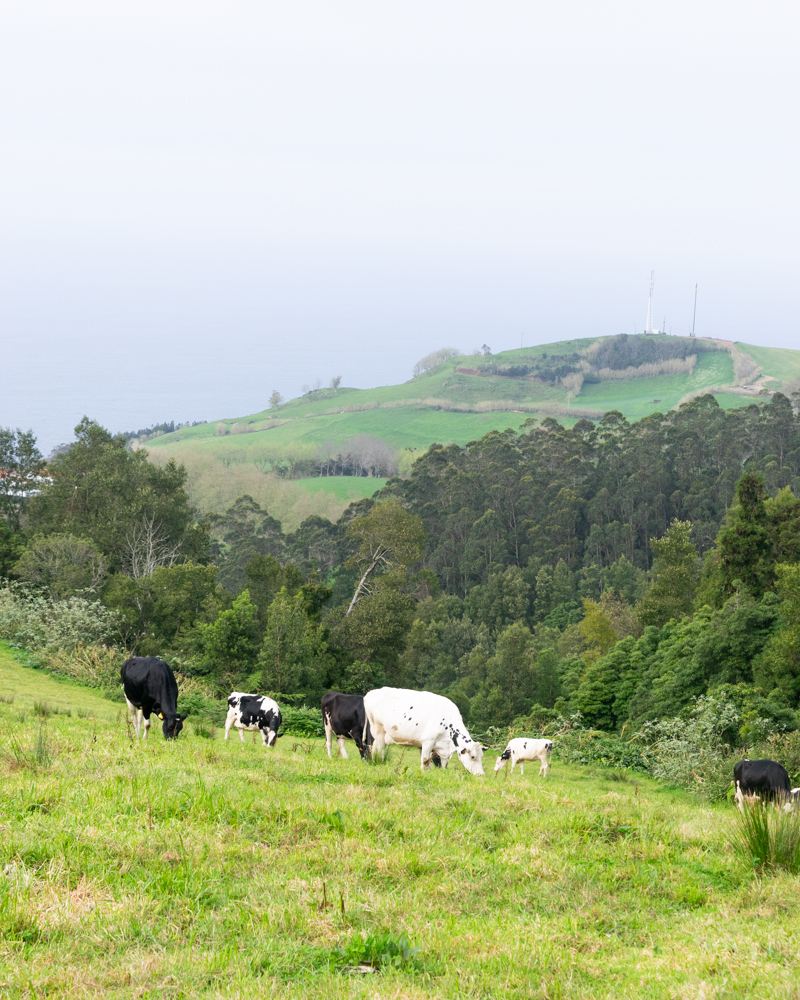
After two hikes and iron-rich hot springs, we were very ready for hot showers and dinner. We headed back to the hotel for a quick refresh before driving into Ponta Delgada for dinner at Ta Gente. I would agree with the restaurant’s 4-star rating on Google. The food was good and the service was friendly, if a little slow. We called it a night after dinner, partly because our day had been incredibly full, and partly because driving too far after dark on the island seemed like more trouble than it was worth. (While this did limit our dinner options to Ponta Delgada, it otherwise wasn’t an issue.)
Day 3
Just like our first full day, the first thing we did when we woke up was check the cameras. Lagoa do Fogo was clear (!) so we hurried to get ready and make the half-hour drive. But, of course, by the time we were dressed, the view of the lake was obscured by clouds again. Instead, we headed into Ponta Delgada for breakfast at Jardim Natural Food & Coffee, located in Jardim Botânico António Borges. I still think about the yogurt parfait I had here. I would have never added pumpkin puree and dark chocolate to Greek yogurt on my own, but it was so good. This was probably the best meal we had on São Miguel. After eating, we walked through the surrounding gardens, which were beautiful. We checked the cameras again and were pleasantly surprised to see the clouds had cleared.
Everything we read about São Miguel said that you might not actually *see* Lagoa do Fogo. The clouds are often too dense to see down into the crater lake. It’s also important to know that, while we could drive up to the various overlooks on our own, that’s not possible during peak season, when hop on/hop off buses run all day to limit traffic on the narrow, winding roads. If you are driving yourself, once you get close to the lake, there are clear signs directing you to the various overlooks and adjacent parking.
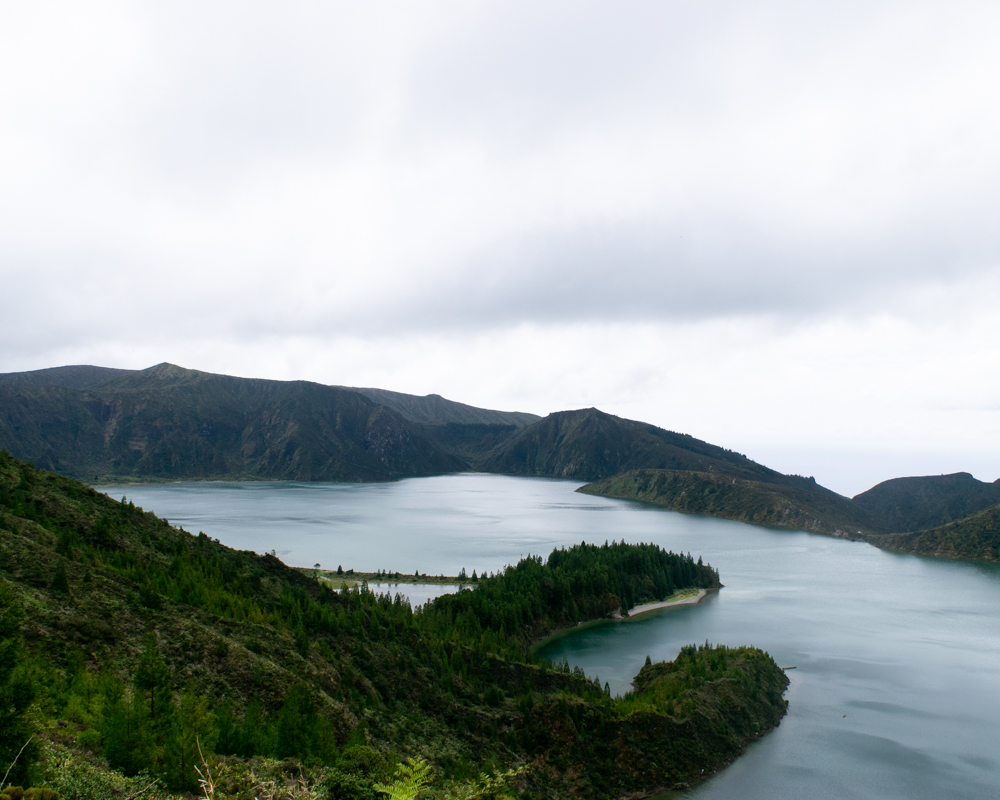
We were incredibly lucky to look down on the lake from several vantage points. It was beautiful from every single one. You can hike down into the crater, but because we weren’t really counting on seeing the lake, we also weren’t counting on being able to explore here. Plus, getting down into the crater involves a lot of stairs—not really my idea of a good time.
Instead, we drove west across the island to hike the Serra Devassa trail, a 3-mile loop that was truly otherworldly. The windswept ridges felt nothing like the lush agricultural landscapes we had explored the day before. Heading out, we passed a group in head-to-toe technical gear and got a little worried about completing the hike in sneakers and hoodies, but the next family we encountered included a kid in rain boots doing just fine, so we carried on.
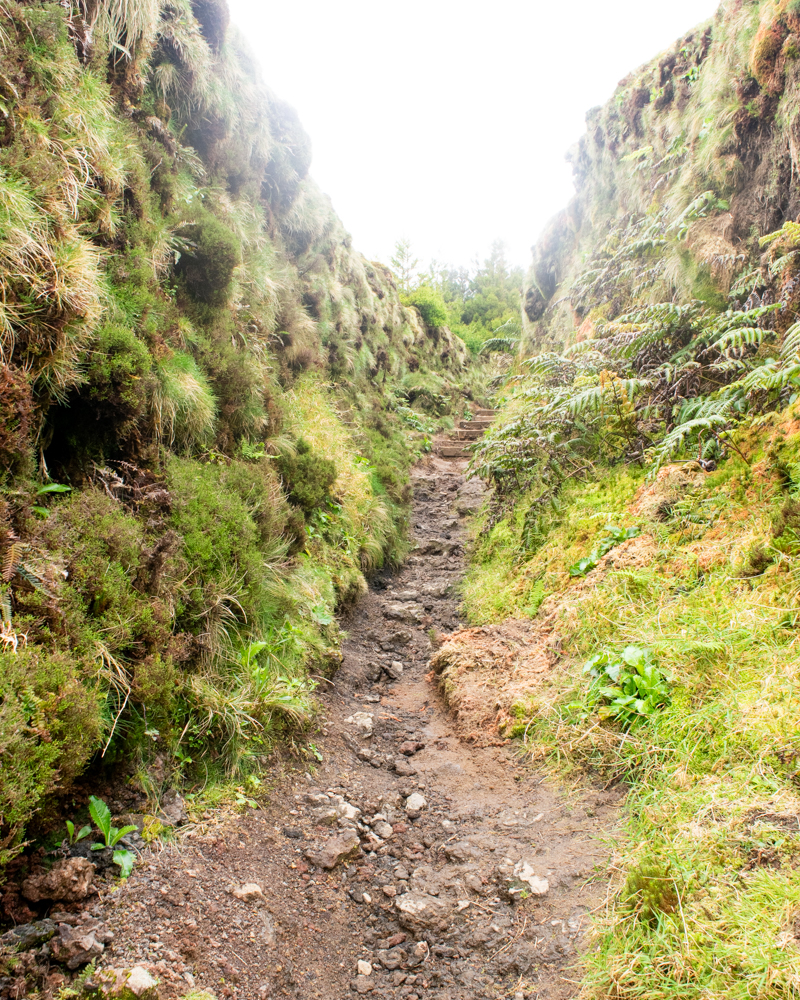
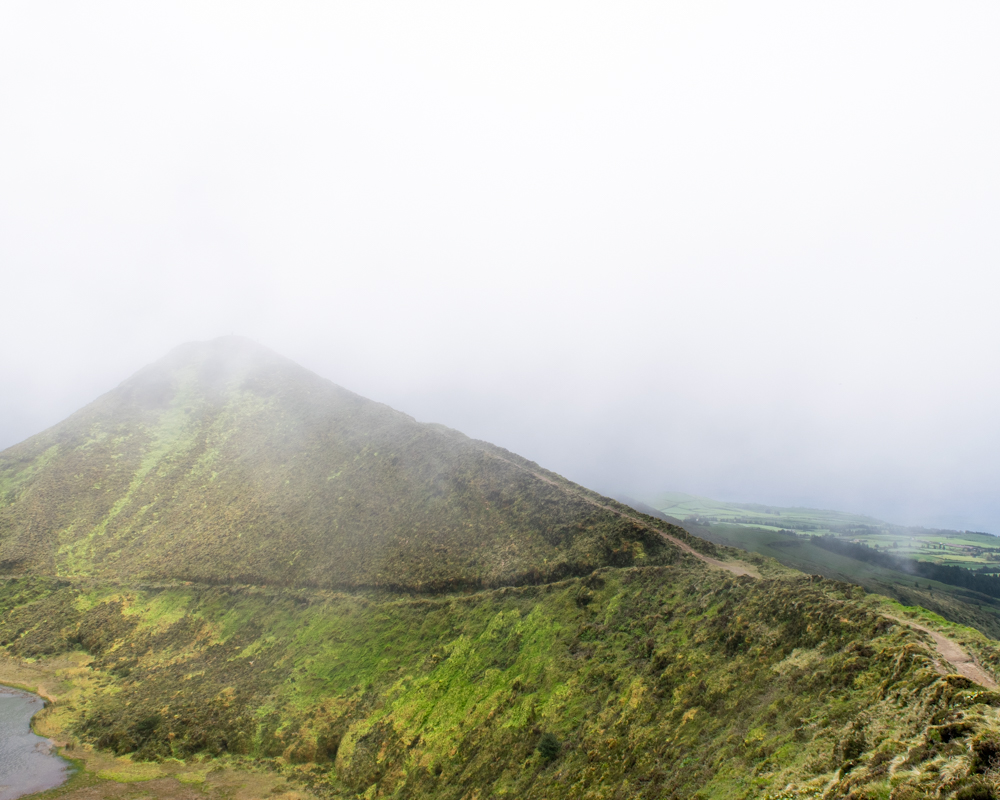
The trailhead was across the road from what was supposed to be an easily accessible overlook just east of Lagoa das Sete Cidades. The “wooden pathway” (as it’s marked on Google Maps) was picturesque, but a longer walk than expected after our hilly hike. There was some construction going on, so that might have made the walk more complicated than usual. Or maybe the travel blogger version of “accessible” is just more rugged than I expected.
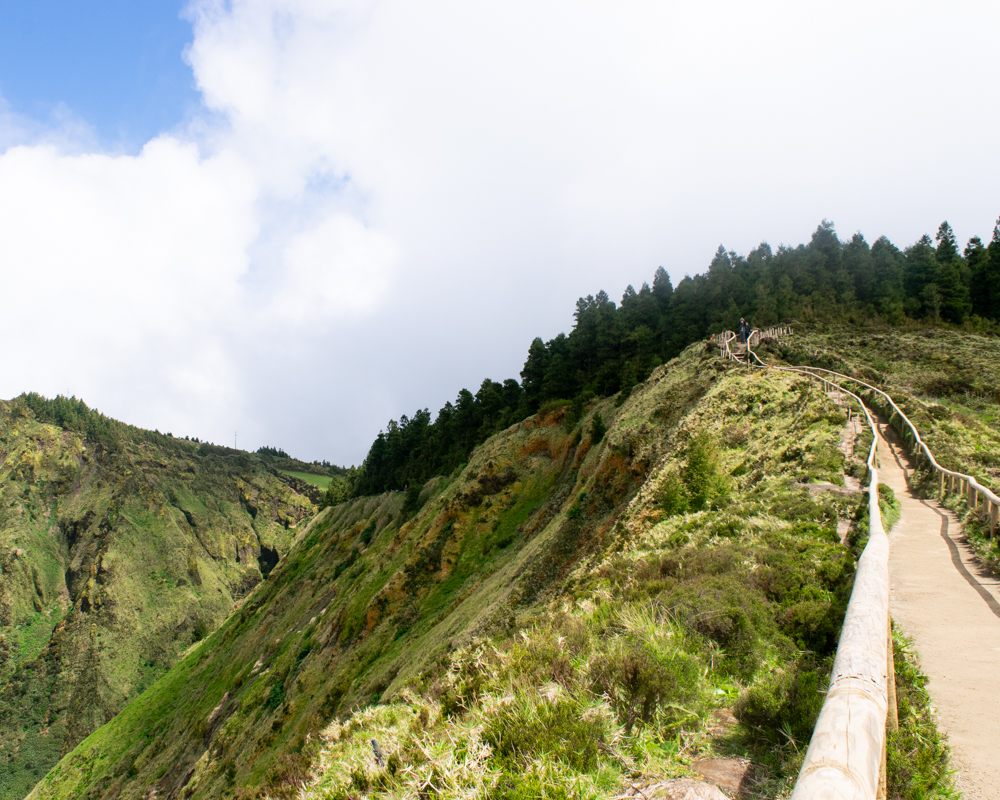
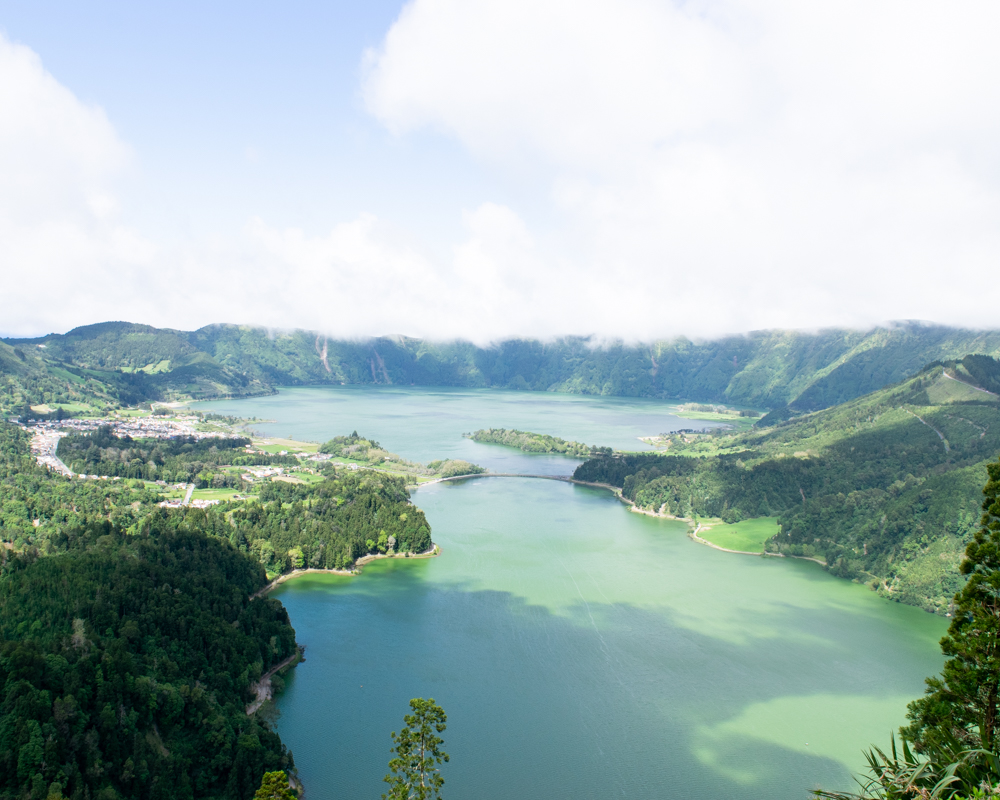
We got back in the car and continued to Miradouro da Vista do Rei for the iconic view of the two lakes. The overlook has souvenirs for sale, a food truck and the abandoned Hotel Monte Palace, a five-star hotel that closed just 18 months after it opened in 1989. I’m not one for heights or trespassing, so we skipped the hotel. There are two things I’d love to come back to Sete Cidades for though: 1) The islands’ famous hydrangeas, which line the overlook—and weren’t in bloom yet, and 2) The rental kayaks available to paddle the lakes (which we didn’t know were an option until we saw them from the overlook).
One of our must-sees for this leg of the trip was a black sand beach, so we continued west to Praia do Mosteiros. We got ice cream at the public beach’s snack shack and walked the length of the beach, which really was incredible. After an hour or so, we headed back to the hotel for a little bit of time at the pool. It was too cold to swim, but the lounge chairs were perfect for reading in the late-afternoon sun.
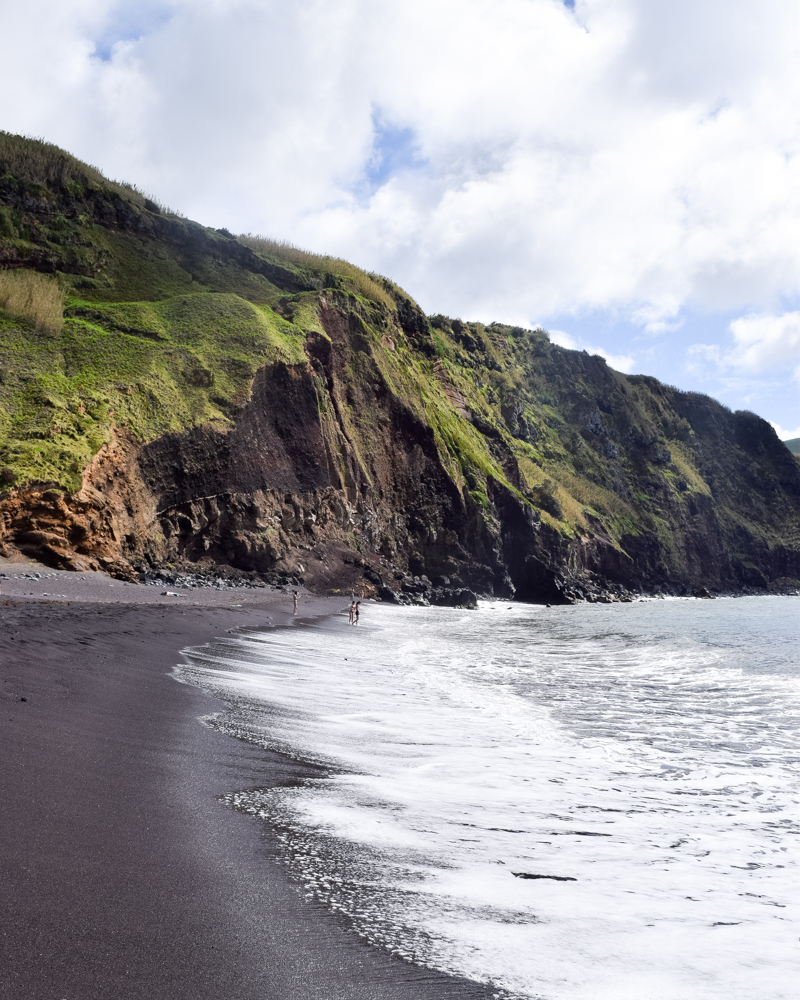
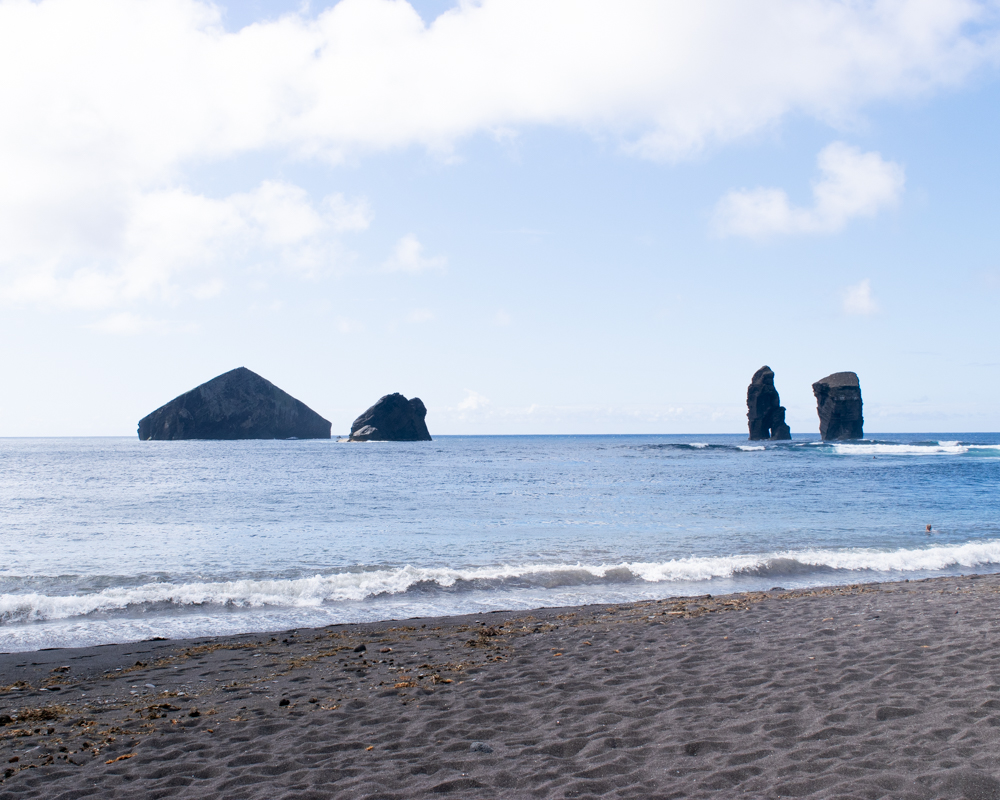
Our dinner plans involved Supléxio, a burger restaurant in Ponta Delgada. There was a short wait, so we wandered nearby streets until our table was ready. It was during this walk we found Traça studio gallery. Because this wasn’t our last stop, and our suitcases were stuffed to the gills already, I didn’t buy anything in person. (But I did order a few prints via Instagram when we got home.) After dinner, we headed to the hotel once again, this time to pack our suitcases for a morning flight back to the mainland.
Day 4
It was so easy to return our rental car at the airport, and we were soon on our way to honeymoon part three: the Algarve.
While we only spent two days on São Miguel, it was enough to make me want to go back immediately. The island is picture perfect, welcoming, and has so much we didn’t even come close to visiting. Next time!

